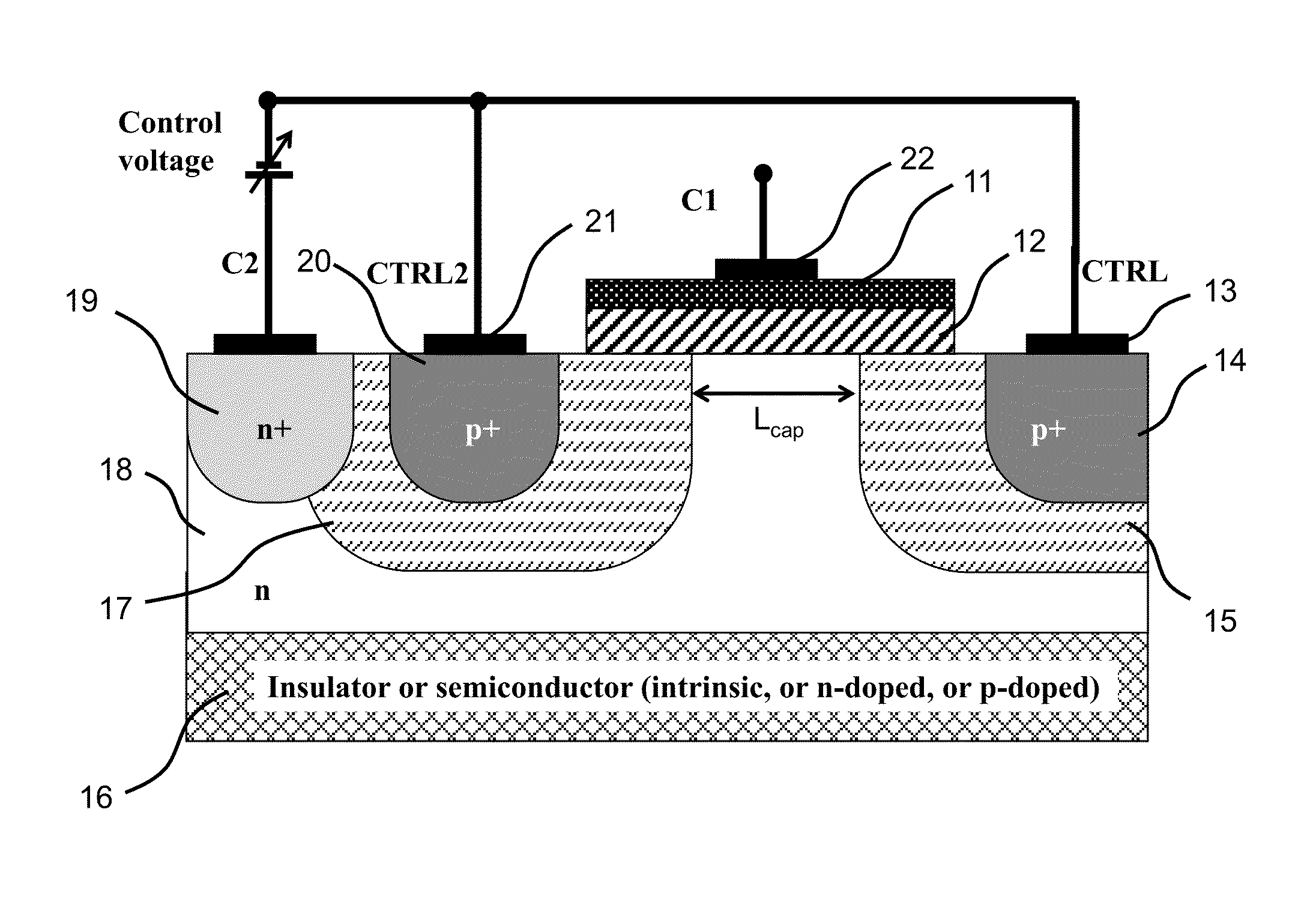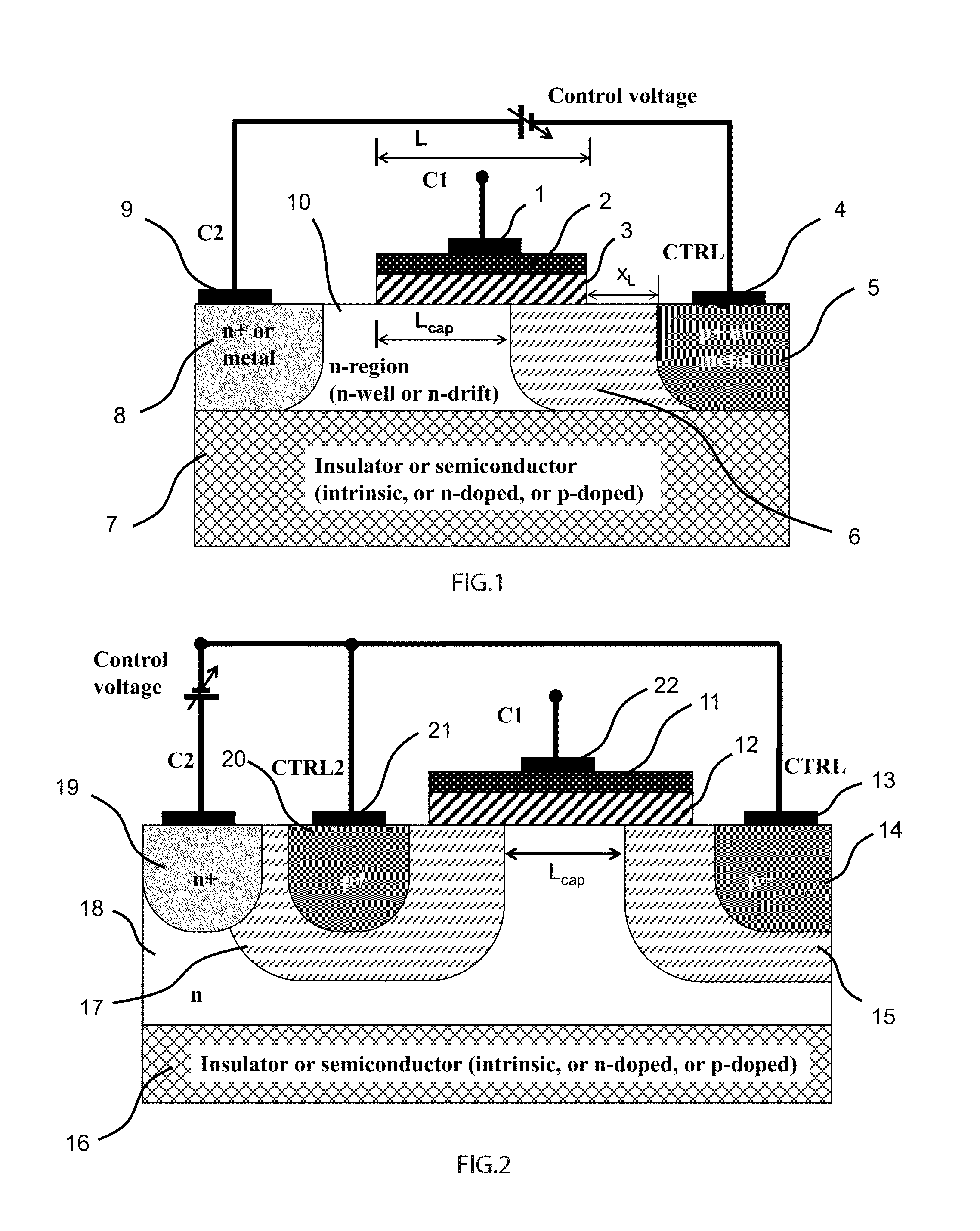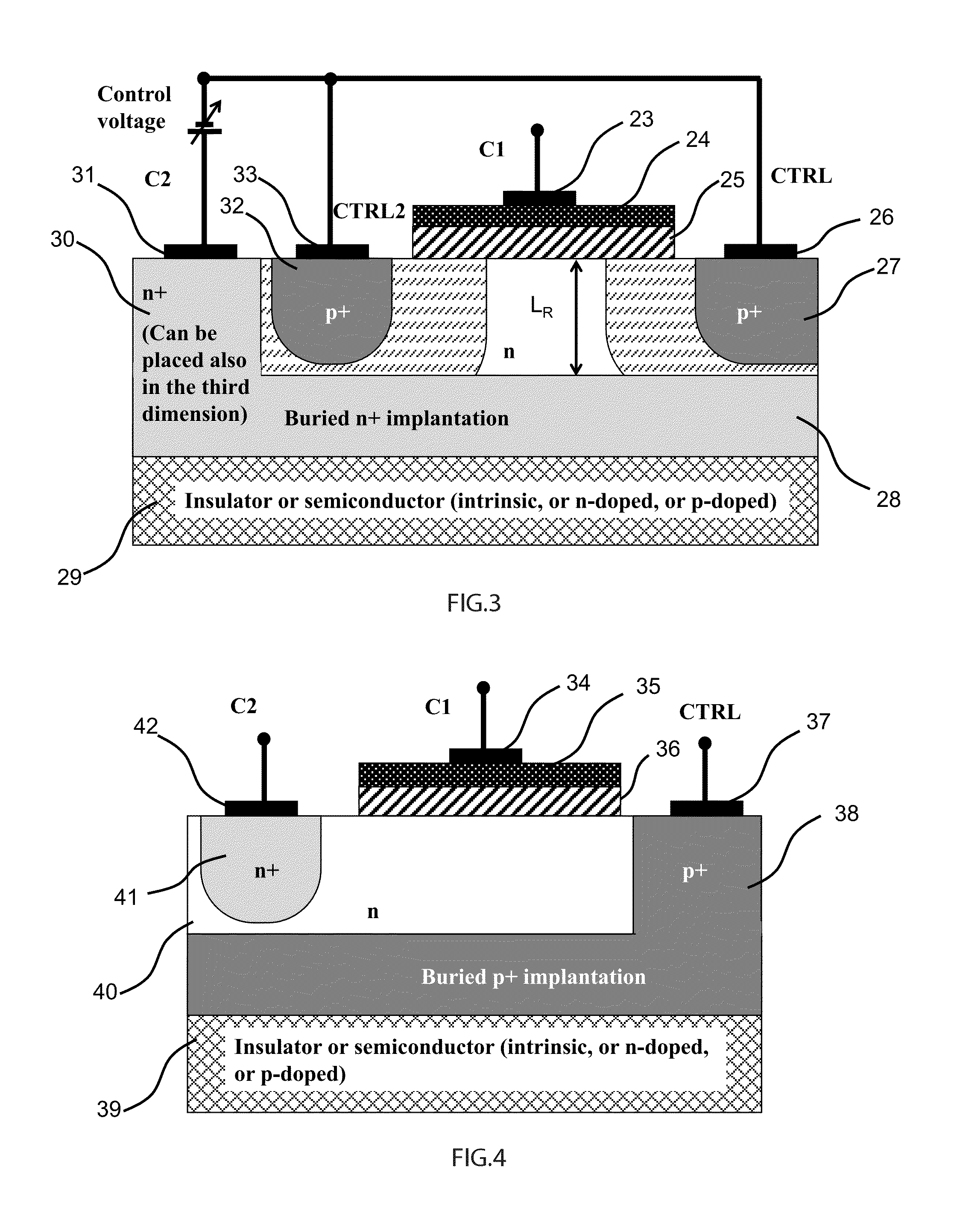Analog transcap device
a transcap and analog technology, applied in the field of semiconductor devices, can solve the problems of distorted capacitance value, inability to obtain an extremely high capacitance value, and inability to add unacceptable levels of inter-modulation, so as to avoid distortion and increase the performance of the device
- Summary
- Abstract
- Description
- Claims
- Application Information
AI Technical Summary
Benefits of technology
Problems solved by technology
Method used
Image
Examples
Embodiment Construction
A FIG. 1
[0137]FIG. 1 is showing the preferred embodiment of the invention as described in the regular patent application U.S. Ser. No. 13 / 068,161 entitled “Semiconductor Variable Capacitor”, filed by the same applicants on May 5, 2011. The pt type region 5 defines the control terminal of the device whereas the region 2 and the n+ region 8 are the two terminals of the capacitor. Region 3 corresponds to the capacitor dielectric layer, whereas region 10 is a n-type semiconductor layer. xL is the distance between the capacitance plate 2 and the p+ control region 5, whereas L is the length of the lower effective capacitance plate 2. The lower capacitance plate is constituted by the neutral region of the semiconductor layer 10, and is connected to the C2 terminal 9 through the n+ region 8. The C1 electrode 2 may be built in poly-silicon or metal.
B FIG. 2
[0138]FIG. 2 is depicting the cross-section view of a semiconductor variable capacitor according to a further embodiment of the invention...
PUM
 Login to View More
Login to View More Abstract
Description
Claims
Application Information
 Login to View More
Login to View More - R&D
- Intellectual Property
- Life Sciences
- Materials
- Tech Scout
- Unparalleled Data Quality
- Higher Quality Content
- 60% Fewer Hallucinations
Browse by: Latest US Patents, China's latest patents, Technical Efficacy Thesaurus, Application Domain, Technology Topic, Popular Technical Reports.
© 2025 PatSnap. All rights reserved.Legal|Privacy policy|Modern Slavery Act Transparency Statement|Sitemap|About US| Contact US: help@patsnap.com



